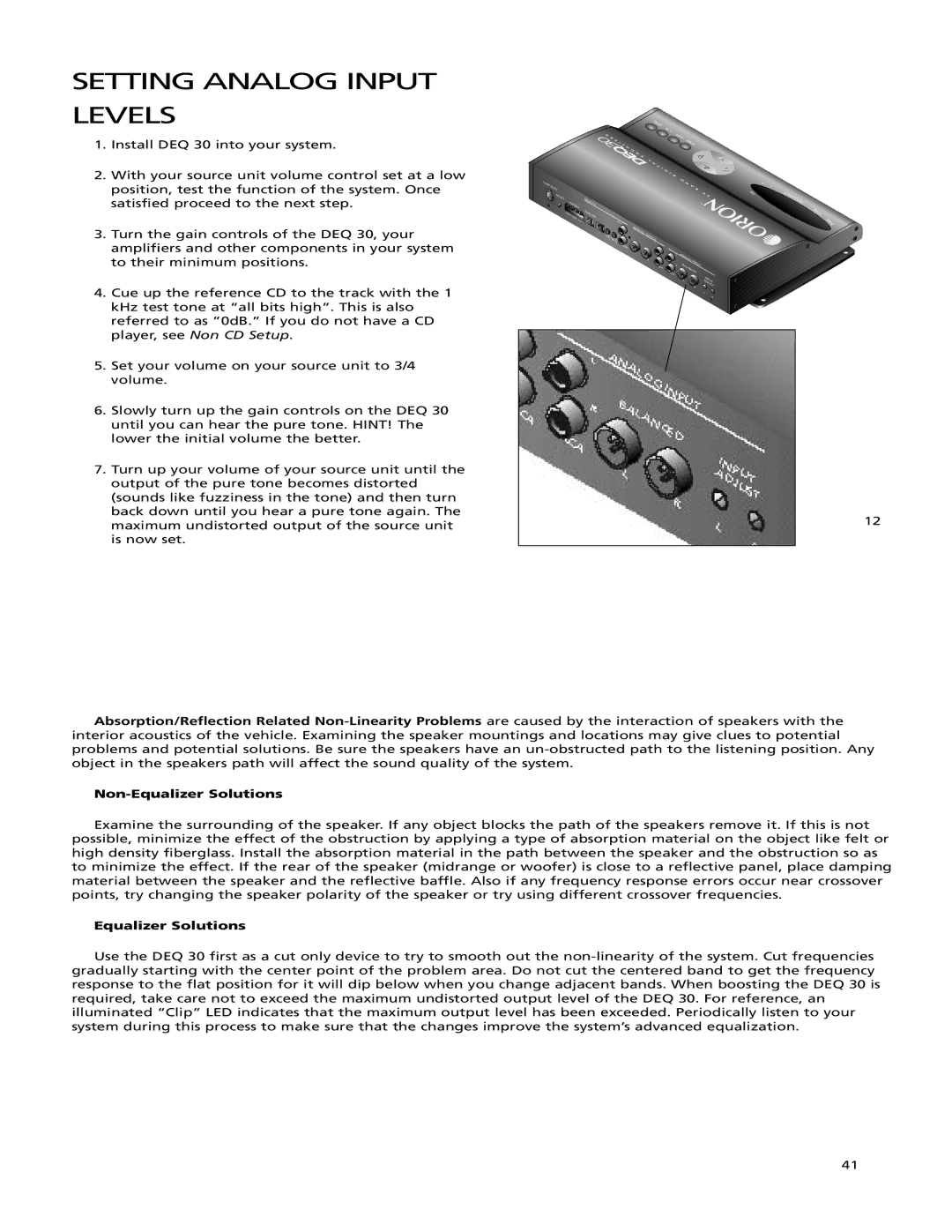
SETTING ANALOG INPUT LEVELS
1. | Install DEQ 30 into your system. |
2. | With your source unit volume control set at a low |
| position, test the function of the system. Once |
| satisfied proceed to the next step. |
COM
PO |
RT |
R |
ES |
ET |
POW |
ER |
REM | GND |
|
DIGITAL TOSLINK
3. | Turn the gain controls of the DEQ 30, your |
| amplifiers and other components in your system |
| to their minimum positions. |
4. | Cue up the reference CD to the track with the 1 |
| kHz test tone at “all bits high”. This is also |
| referred to as ”0dB.” If you do not have a CD |
| player, see Non CD Setup. |
5. | Set your volume on your source unit to 3/4 |
| volume. |
6. | Slowly turn up the gain controls on the DEQ 30 |
| until you can hear the pure tone. HINT! The |
| lower the initial volume the better. |
7. | Turn up your volume of your source unit until the |
| output of the pure tone becomes distorted |
| (sounds like fuzziness in the tone) and then turn |
| back down until you hear a pure tone again. The |
| maximum undistorted output of the source unit |
| is now set. |
T |
C OS/ |
OAX |
| OUT | |
|
| A |
|
| NA |
| IN | LOG |
A |
| |
| NAL |
|
DIG OG/ |
| |
| ITAL | CO |
|
| |
|
| AX |
|
| L |
OUTPUT
L
R![]()
R
RCA
L | AN |
|
|
| |
|
| ALO |
|
|
|
|
| GI |
|
|
|
| B | NP | UT |
|
|
R | ALA |
|
| ||
|
|
|
|
| |
|
| NC |
|
|
|
RCA |
| ED |
|
|
|
|
| IN |
| ||
| L |
| |||
| A | PU | T | ||
|
|
|
| DJ | |
|
| R |
| UST | |
L
R
12
Absorption/Reflection Related
Non-Equalizer Solutions
Examine the surrounding of the speaker. If any object blocks the path of the speakers remove it. If this is not possible, minimize the effect of the obstruction by applying a type of absorption material on the object like felt or high density fiberglass. Install the absorption material in the path between the speaker and the obstruction so as to minimize the effect. If the rear of the speaker (midrange or woofer) is close to a reflective panel, place damping material between the speaker and the reflective baffle. Also if any frequency response errors occur near crossover points, try changing the speaker polarity of the speaker or try using different crossover frequencies.
Equalizer Solutions
Use the DEQ 30 first as a cut only device to try to smooth out the
41
